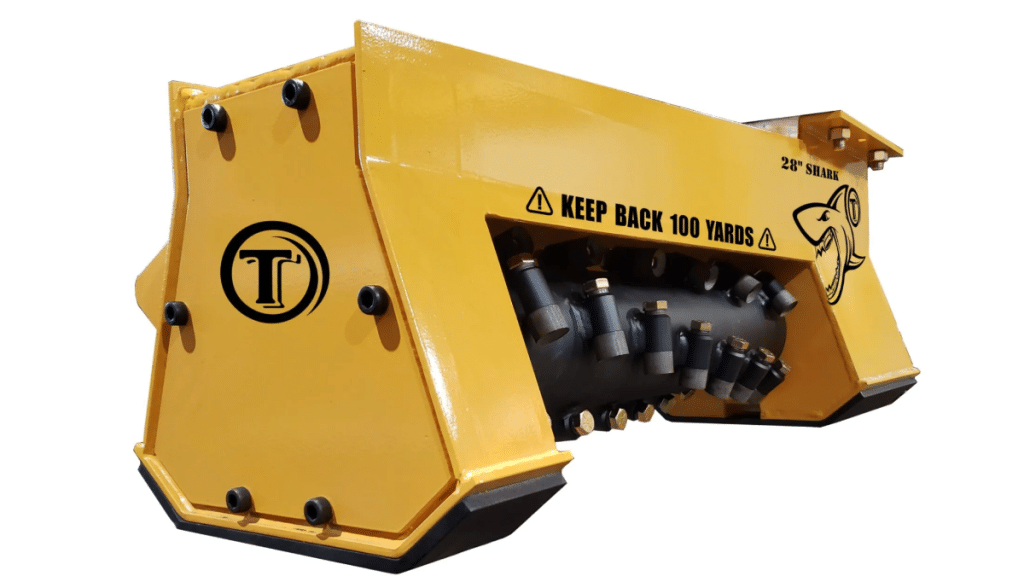Brush cutters are sturdy attachments designed to fit mini excavators perfectly and are adaptable for various landscaping jobs. Fundamentally, these cutters are outfitted with robust blades that effectively cut through dense and demanding foliage. This offers a thorough approach to cleaning and maintaining land by slicing through small trees, dense shrubs, and thick grasses.
The design of brush cutters for mini excavators strongly emphasizes efficiency and power, making them robust enough to withstand the demands of outdoor labor and versatile enough to function with various machinery. Are you looking to buy one for your mini excavator? Here are the things to consider:
Weight
The brush cutter’s weight must match the dimensions of the mini excavator you are using it with. This keeps the excavator from toppling when the brush cutter extends over its center of gravity. Working on rough terrain makes this even more crucial. Generally, the weight range for many mini excavator brush cutters is 500–1200 pounds. Generally, the recommended minimum operational weight for a 1,200-pound brush cutter is between 17,000 and 25,000 pounds, and 7,000 pounds for a 500-pound brush cutter.
Hydraulic flow
Secondly, you should consider your mini excavator’s auxiliary hydraulic flow. Your excavator must be able to generate the minimal auxiliary flow required for mini excavator brush cutters. Respecting the maximum auxiliary flow recommendation is also important. This will guarantee the validity of your warranty and safeguard your hydraulic pump.
Hydraulic motor
Any brush cutter’s hydraulic motors are the brains of the entire apparatus. The auxiliary circuit of the mini excavator will supply hydraulic oil to the brush cutter’s direct drive system, which converts it into cutting force at the blade carrier. Performance directly depends on the kind of hydraulic motor that is employed. Some brush cutters have piston-type motors, while others have geroler motors. Smaller mini excavator brush cutters employ a geroler motor, but “severe duty” variants typically use piston motors.
Blade carrier
The blade carrier of a standard small excavator brush cutter is triangular and contains three blades. The triangular shape aids in weight reduction on a three-blade cutting system. The less weight maintains high rotational rates and facilitates the blade carrier’s ability to accelerate again after cutting through the bush. You will save time using an integrated system that simplifies replacing and maintaining the cutting blade.
Closed front VS open front
Mini excavator brush cutters are available with open or closed front. While both designs work well in most situations, the open-front designs are sharper, making it simpler for thick and heavy brush to feed into the cutter. Closed-front brush cutters enable a better finish by holding the debris inside the cutter longer.
Deck thickness
The coupler on a mini excavator brush cutter rests on top of the cutter. Deck thickness is a crucial consideration because the mini excavator operator may eventually tip over onto the brush cutter or force weight onto the deck. If a brush cutter has a weak deck, it can be damaged by a heavy excavator. Generally, a 1/4″ deck thickness is a decent place to start.
The reputation and warranty of the manufacturer
When buying a brush cutter for your mini excavator, choose a reputable, high-quality brand like TorrentMulchers. Also, seek out one with a strong guarantee and attentive customer service.
Simplicity of upkeep
Having quick access to replacement or honing blades can save time and effort. Replacement parts should be readily available, and the attachment should be serviceable.
THE TAKEAWAY
Eliminating the models that won’t function with your host machine will help you swiftly focus your search for a mini excavator brush cutter. From there, consider the aspects mentioned above to make an informed purchase.

